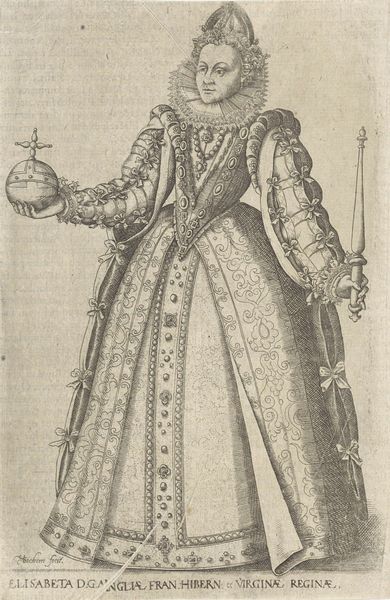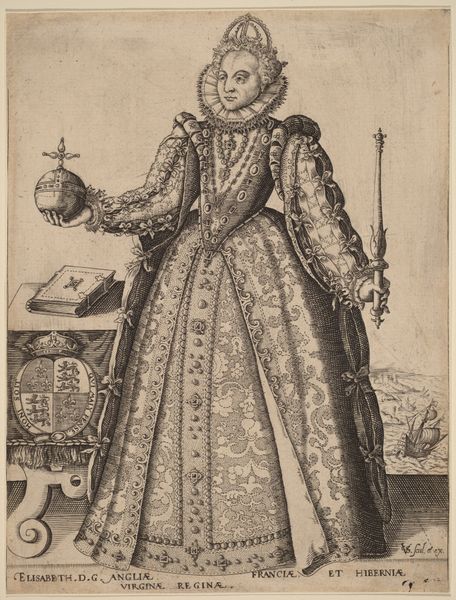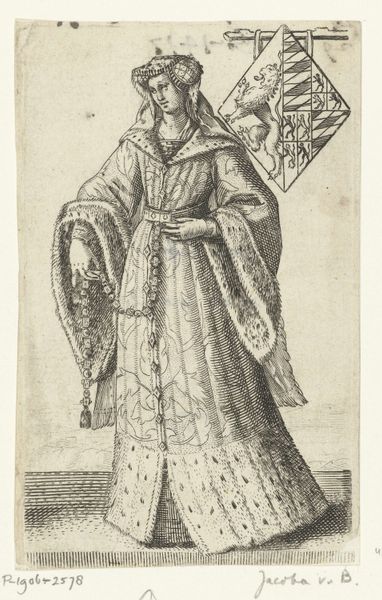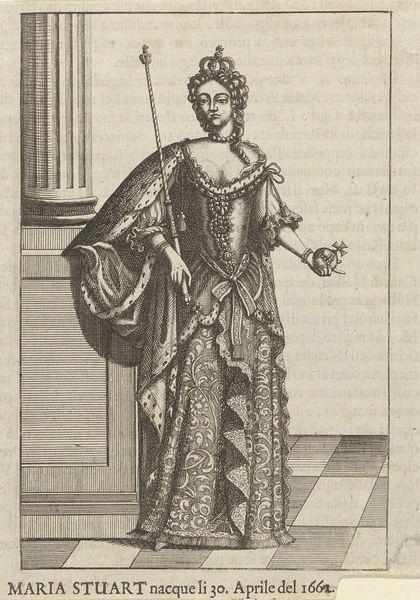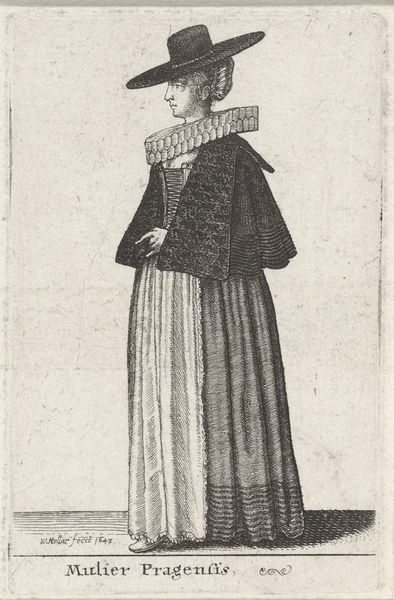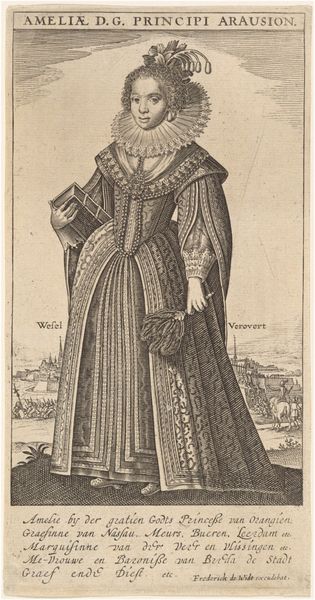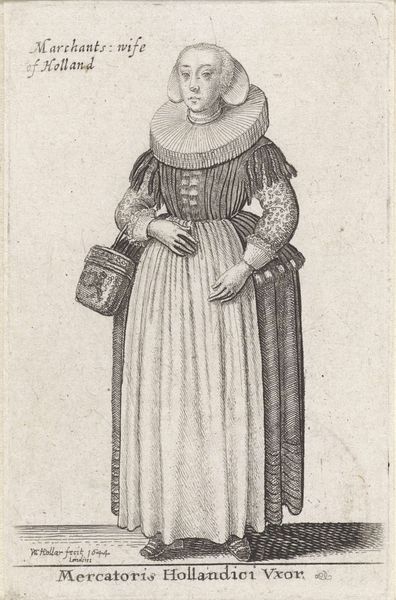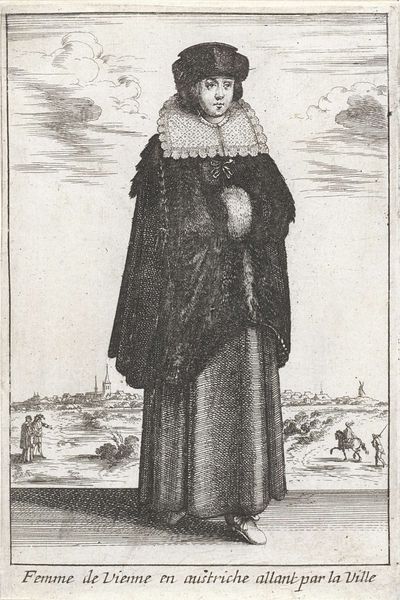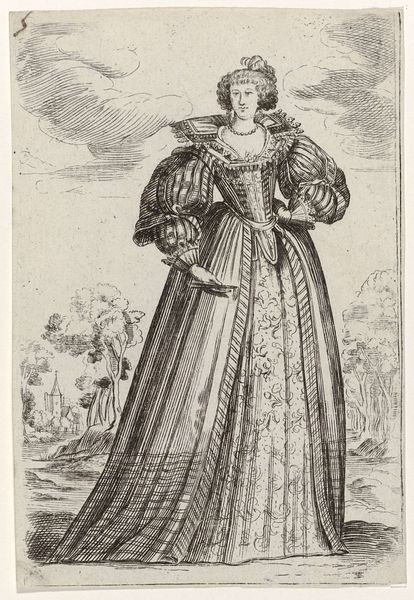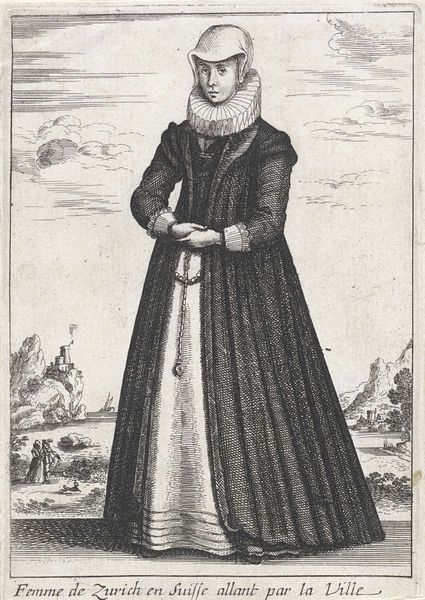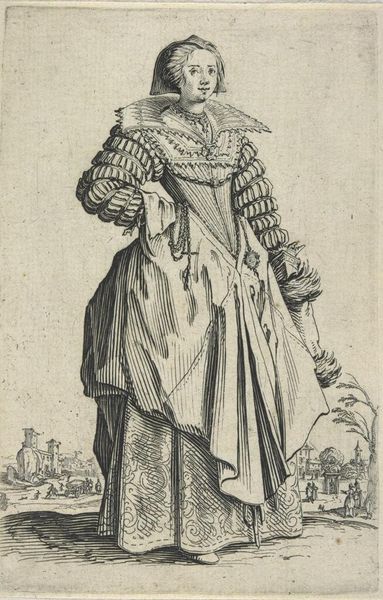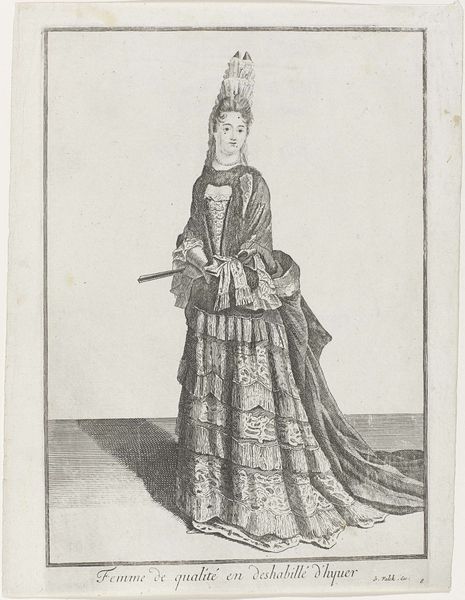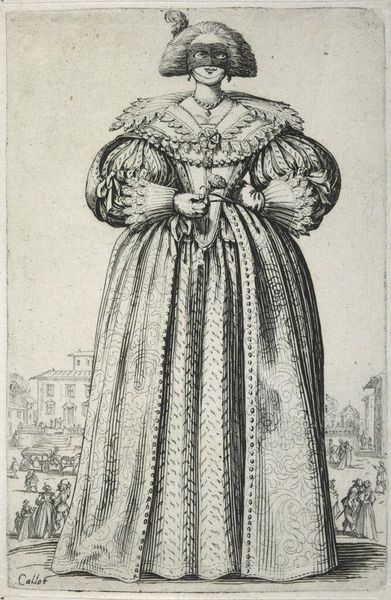
print, engraving
#
portrait
# print
#
11_renaissance
#
history-painting
#
northern-renaissance
#
engraving
Dimensions: height 185 mm, width 118 mm, height 226 mm, width 148 mm
Copyright: Rijks Museum: Open Domain
Curator: This print, located in the Rijksmuseum, presents "Portret van Elizabeth I Tudor, koningin van Engeland"—a portrait of Queen Elizabeth I of England, made before 1690 by an anonymous artist. It’s an engraving, placing it firmly within the Northern Renaissance tradition. Editor: The first thing that strikes me is the sheer weight of symbolic meaning packed into this relatively small print. The level of ornamentation on her gown is incredible. You immediately read her position. Curator: Absolutely. The visual language of power is very much on display here. Beyond the obvious crown and scepter, consider how prints like these were tools of political messaging. They helped to solidify Elizabeth's image, presenting her as a strong, unwavering ruler at a time of great social upheaval. Editor: Right, the orb is heavy with meaning, isn’t it? It is a clear signal that she commands her dominion, as much more than an individual but a divine extension over the land. Her adornments speak of religious affiliations, and by implication, control. How was it received publicly? Curator: Prints like this, because of their wide distribution capabilities, had profound implications for national identity and propaganda. We see an attempt to fashion the image of England’s great queen; while these prints reinforced an elite identity, they served a unifying purpose when broadly circulated amongst other classes, and were copied for a wide distribution and impact. Editor: And what of its relationship with similar iconographic traditions? Are there earlier echoes, perhaps, in religious art or earlier monarchical portraiture? What feeling does this evoke? Curator: I imagine she sought the feeling of permanence as the head of her state, the way divine right was portrayed by emperors for centuries. A figure of formidable and unshakeable conviction. Editor: Precisely, images often do that; become crystallized symbols which last through history, carrying cultural memory far beyond the individual. Curator: Thinking about how we look back on the symbols represented in the print offers such insight into how she saw her influence.
Comments
No comments
Be the first to comment and join the conversation on the ultimate creative platform.
